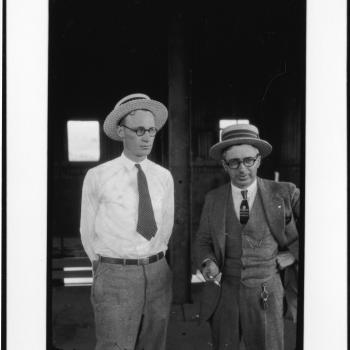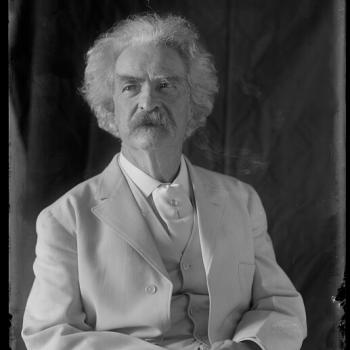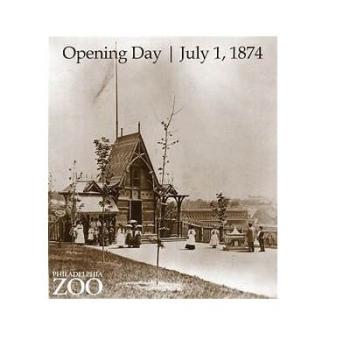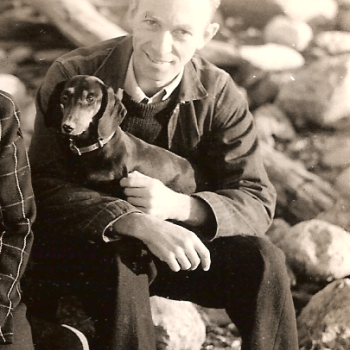
In 1925, from July 10 to July 21, John Scopes was on trial for teaching the idea of evolution in his public school classroom in Dayton, Tennessee. The court case, dubbed the "Trial of the Century," featured two of the most famous attorneys in the United States-Clarence Darrow and William Jennings Bryan.
The Scopes Trial focused on the evolution of mammals, but the word evolution can refer to other objects and processes, such as tools, computers, and automobiles. Have your students brainstorm a list of objects and processes that have changed over time. Then, individually or in small groups, invite students to choose and focus on one item from the list. Allow them to use the interactive Timeline tool to sketch out the changes, or evolution, of the items that they have chosen. View more tips to learn more about the tool. After considering the changes that have occurred for the items, have students examine the significance of the changes. In their opinions, have the changes affected the world for the better or for worse? Students can then share their information and opinions with the whole class.
Conclude the project by posting all of the timelines on your classroom wall, creating a giant timeline of the evolution of the items your students have investigated. Invite students to look for patterns as well as to connect the timelines to historical events that occurred during the same time period. For a more structured activity, try the resources in the ReadWriteThink lesson Timelines and Texts: Motivating Students to Read Nonfiction.
This website, developed by PBS, features detailed information about the Scopes, or “Monkey” Trial, including images from the famous courthouse in Dayton, Tennessee.
Part of the University of Missouri, Kansas City School of Law collection Famous Trials in American History, this site highlights documents related to the Scopes Trial.
This article, featured in the National Geographic Magazine, tells about life in Dayton, Tennessee 75 years after the Scopes Trial took place there.
This NPR resource offers a timeline of events surrounding the Scopes trial, as well as audio of an All Things Considered feature on the subject.

Many people celebrate the Fourth of July as the birthday of the United States, but the actual events on that day involved only a half dozen people. On July 4, 1776, the Declaration of Independence was approved and signed by the officers of the Continental Congress in Philadelphia, Pennsylvania. Most of the other members signed during a ceremony on August 2.
Is the Fourth of July the day the U.S. declared its independence? Explore all the dates during the summer of 1776 that are associated with the Declaration of Independence:
- July 2: Declaration of Independence Resolution adopted by the Continental Congress
- July 4: Declaration of Independence signed by the officers of the Continental Congress
- July 8: First public reading of the Declaration of Independence
- August 2: Declaration of Independence signed by 50 of the 56 men who signed the document
Explore texts that include the stories surrounding the Declaration of Independence. Possibilities include reference books, encyclopedias, and specific texts, examples of which appear in the Independence Day Book List. With your students, consider why there are so many different dates and why we celebrate the nation's birthday on July 4.
This page features the Declaration of Independence along with information about its writing and preservation, a timeline of its creation, and information on the signers.
As on online companion to the television series Liberty! The American Revolution, originally broadcast on PBS, this webpage focuses on the events of July 4, 1776. Be sure to explore the site for lesser-known facts. For instance, did you know that Congress designated a woman as the first official printer of the Declaration?
On July 8, 1776, the Liberty Bell was rung in Philadelphia to announce the first public reading of the Declaration of Independence. This National Park Service site includes facts about the Liberty Bell and its historic significance during the American Revolution.

Each year, the Hannibal Jaycees sponsor National Tom Sawyer Days during the Fourth of July weekend to celebrate the town's most well-known citizen, Mark Twain. The highlight of the event is the fence-painting contest, which begins on July 4 with local competition and advances to state and national contests over the next three days.
Mark Twain uses great detail to capture the locations of his tales. Readers feel as if they have actually traveled with Twain to the settings of his stories and novels. Choose a particular scene in one of Twain's works and do a close examination of the setting. First, have students map the story setting, using the interactive Story Map. Then discuss the setting using these prompts:
- How does Twain use extended description, background information, and specific detail to make the setting come alive for readers?
- How do the main characters fit into the setting-do they seem at home or out of place?
- How do their reactions and interactions with the setting affect the realism of the location?
Discuss the techniques that Twain uses to make the settings in his stories vivid and real to the readers and the extent to which these techniques are effective.
Visit this PBS site to learn about Twain through his writing and view his scrapbook.
Visit Hannibal, Missouri, where Sam Clemens and other children who influenced characters in Tom Sawyer grew up.
Visit this archive, produced by the Electronic Text Center at the University of Virginia, to find pictures, transcriptions, and analysis of Twain's writing, and information about the marketing of his books.

On the morning of July 1, 1874, the first zoo in the United States, the Philadelphia Zoo, opened its doors to visitors who, for a quarter or less, could visit and view the 813 animals that lived there. Today, the Philadelphia Zoo has more than twice as many animals and four times as many visitors as it had during its first year of operation.
Much more has changed in the zoo than the number of animals and visitors. Visit the Philadelphia Zoo's History Overview to learn more about the first zoo in the United States. Then have your class compare features and aspects of the first zoo with a modern zoo, using the interactive Venn Diagram tool. Ask your students to think in particular about the differences in how animals are cared for and the habitats where they live.
Once your students have considered how zoos have changed over the past century, invite them to imagine the zoo of the future. How will animals be cared for? What will the zoo look like? Who will visit the zoo? What will be the primary mission of the zoo? In small groups, students can explore these questions and then design their own zoo of the future using drawings, posters, dioramas, or a similar display technique.
National Geographic Education’s encyclopedia entry on zoos includes information on zoo history, types of zoos, zoo specialization, and conservation efforts. Related terms are defined in a Vocabulary tab. The website includes related reading suggestions, illustrations, and links to related National Geographic Education resources.
This site highlights the traveling Robot Zoo exhibit. This online exhibit explains how the robots work and how they relate to the real animals that they are modeled after. Students can even pet the animals online!
If you don't have a zoo nearby, you can use this site to find pictures and information about animals and their habitats. This site also features Classroom Resources, such as free curriculum guides and information about outreach programs.

After spending many years writing for The New Yorker, E.B. White turned his hand to fiction when his first children's book, Stuart Little, was published in 1945. White's most famous children's book, Charlotte's Web, followed in 1952. Both went on to receive high acclaim and in 1970 jointly won the Laura Ingalls Wilder Medal, a major prize in the field of children's literature. That same year, White published his third children's novel, The Trumpet of the Swan. In 1973, that book received the William Allen White Award from Kansas and the Sequoyah Award from Oklahoma, both of which were awarded by students voting for their favorite book of the year.
In honor of White’s love for children’s books about animals, have a class discussion about the ways that animals are portrayed in different fictional novels (both those by White and others). Have students do one or more of the following activities to further examine farms and farm animals, such as those in Charlotte’s Web:
- Take a class field trip to a local farm. Have students take pictures and write down the sights and sounds of the farm. After returning to the classroom, have students compile a class scrapbook that highlights the different animals at the farms and the most important things learned on the field trip.
- Students can create Acrostic Poems about a farm animal of their choice, share their poems with the class, and then create a classroom bulletin board showcasing all of the students’ favorite farm animals and information about each one.
- Have students create a Venn Diagram comparing and contrasting the farm with the city, farm life with city life, or two different farm animals. This activity can also be followed up by writing a Compare and Contrast Essay as a part of a longer activity.
- Compare the book version of Charlotte’s Web to the movie version. Then, use the Compare and Contrast Map or Venn Diagram to discuss the similarities and differences between the two.
This site includes stories about E.B. White's life and Charlotte's Web, Stuart Little, The Elements of Style, and Trumpet of the Swan.
Read about E.B. White, author of the cherished children's classic Charlotte's Web, Stuart Little, and The Trumpet of the Swan.
Find out information about E.B. White, Charlotte’s Web, and take part in some “fun and games” related to the book and movie.

Joel Chandler Harris is best known for his Uncle Remus stories. Harris collected the Uncle Remus tales from the stories shared by slaves. His use of phonetic dialogue in his stories allowed later authors to use vernacular in their renditions of regional tales. Harris's stories remain a good example of regional folk literature from the American South.
One striking aspect of Harris' stories is that in conveying the regional dialect the dialogue is written phonetically, which lends itself to oral reading of the stories. This vividly evokes the stories' original cultural milieu. Select a short segment of Uncle Remus with prominent dialogue and read it aloud to your students. Then read a segment from another book that features a different type of phonetic dialogue, such as The Witches by Roald Dahl, and listen to a Gullah Tale. After reading the three different examples of phonetic dialogue, have students use the interactive Venn diagram to compare them.
One thing all three examples have in common is that they render dialogue that has a vivid sound and feel. Challenge students to write a brief dialogue that might occur between themselves and a friend or parent. Encourage them to pay attention to phrasing and vocabulary, so that the dialogue sounds realistic. Next, have them exchange papers with a partner and read each other's dialogue aloud. Did the dialogue sound the same aloud as they imagined it when they wrote it? They should then revise any parts of the dialogue that did not sound realistic. They can repeat this process until they have a realistic dialogue.
This site provides information about the life of author Joel Chandler Harris, as well as links to the books that made him famous.
Links from this site take readers to songs and sayings by Harris.
In this Scholastic workshop, students hone their storytelling skills. There are online activities, examples, and practice opportunities included in this resource.
This resource offers examples of folk tales in both English and Gullah, a phonetically written language. Students can hear folk tales read aloud in both languages.

In 1941, the United States forces at Pearl Harbor, Hawaii, were taken by surprise when Japanese warplanes began to drop bombs on the city and naval base. Hundreds of soldiers and civilians were killed during the raid, and the Navy suffered the loss of a great number of ships and other military hardware. This event marked the American entrance into World War II.
On December 7, 1941, "a date which will live in infamy" in the words of President Franklin Roosevelt, many Americans were called upon to act as heroes. Countless Americans gave their lives in defense of our country and its citizens in Pearl Harbor. Similarly, the surprise attacks on America on September 11, 2001, called for heroic acts of selflessness from ordinary citizens, as well as firemen, police, military personnel, and other government workers. Ask students to compare these two events using the interactive Venn Diagram. How are they alike? How are they different?
How did each event change American citizens' perspectives on war and the need for war? How did the two different Presidents of the United States react? What was different about the media coverage?
The class could be divided into groups to brainstorm various aspects of this discussion and then report back to the class as a whole.
This resource from the National Archives includes the typed first draft of President Roosevelt's War Address to Congress with his handwritten edits. An audio excerpt of the speech is also available.
This page by the Naval Historical Center features a historic overview of the Pearl Harbor raid and its aftermath.
This Teacher Tool Kit contains a variety of primary and secondary sources that can be used to supplement your curriculum instruction and offer the most direct explanation of the events surrounding the attack on December 7, 1941.
This page from the Library of Congress includes a copy of the U.S.S. Ranger's Naval dispatch from Commander in Chief Pacific announcing the Japanese attack on Pearl Harbor.

Louisa May Alcott, author of Little Women and other novels, was born on this date in 1832. Alcott wrote several novels under her real name and also penned works under a pseudonym. Her very first novel, The Inheritance-written when she was 17-wasn't published until 150 years after she wrote it, when two researchers discovered it in a library in 1997.
Little Women is partly autobiographical. Alcott used many of the events of her own life as fodder for her writing of this and her other novels. In fact, most scholars believe that the character of Jo March closely resembles Louisa May Alcott. It is not unusual for authors to take incidents from their own lives and use them in their fiction.
Ask students to brainstorm and write in their journals important events and names of people from their lives that might serve as the beginning point for an interesting story, poem, or longer work. Students can then use the interactive Bio-Cube to plan their story. There are more tips available to learn more about the Bio-Cube. An alternative might be to ask students to write about a memorable person in a nonfiction essay format. (This could be submitted to Readers' Digest, which has a feature of this type in each issue). Another alternative would be to have students research the life of Alcott and then read some of her novels to develop a list of those people and incidents from her own life that appear in her fiction.
Information about Alcott's life and work is found at this site. Links provide information about various aspects of her life. The site also includes a virtual tour of the house where Louisa May Alcott grew up.
From the textbook site for the Heath Anthology of American Literature, this site provides complete biographical information, critical material, and links to related resources.
This site for the American Masters film biography of Louisa May Alcott offers extensive information about Alcott's life and work, including historical photos and a multimedia timeline.
The Library of Congress offers this resource with information about Alcott's life, images, and excerpts from the writings of Alcott's father regarding her birth and early childhood.

William Blake was born on November 28, 1757, in London, England. While best known for his poetry, including The Songs of Innocence and The Songs of Experience, Blake was also an accomplished artist and engraver who illustrated many of his own poetic works. As a believer in the power of human imagination, Blake influenced those poets and writers who would later be called the Romantics. He died on August 12, 1827, with no money and little recognition.
In his artwork, Blake invented names, faces, and actions that personified abstract concepts. His character, Urizen, for example, represented law and order, and Blake often drew him as a bearded old man.
As a class, brainstorm a list of grade-appropriate abstract concepts, such as "freedom," "anger," "peer pressure," "frustration," etc. Then, have students choose one and write down all the words that they associate with that concept. Finally, students should personify that concept either through a drawing or through a story told about the character who personifies that concept. See "Poetstanding" the Poem for examples of Blake's personification.
Blake's Songs of Innocence and Songs of Experience also work well to develop students' skills at comparing and contrasting. Have students read and complete a Venn Diagram for The Tyger and The Lamb. Elementary students can identify words and phrases that are similar and different in the poems, while older students should be able to identify differences in tone and theme.
This hypermedia project is sponsored by the Library of Congress and the NEH; it contains everything that you might want to know about Blake, including biographies, written work, visual art, and criticism.
This site has 10 full-color images of Blake's paintings and engravings. Show them to students to introduce a discussion on tone; they are extremely powerful pieces.
This resource for high school students reviews the various characters in William Blake's personal mythology using images and text.
The New York Public Library Digital Gallery offers images of the original versions of three books by Blake, for which he created the text and illustrations and printed the books.

World Hello Day began in 1973 to promote peace between Egypt and Israel. There are now 180 countries involved in the attempt to foster peace throughout the world, and letters supporting the effort have been written by people such as John Glenn, Colin Powell, Kofi Annan, and the United Nations Children's Fund (UNICEF).
Throughout history, important leaders and institutions have used letters to make their beliefs known and to convince others of the importance of peace and unity. Invite your students to study one of the letters below for its message promoting peace in some way:
- Dr. Martin Luther King, Jr.'s Letter from Birmingham Jail
- An Open Letter from American Jews to Our Government
- Yes, Virginia, There Is a Santa Claus
Have students examine one of the letters to determine the author's purpose in writing, and to identify words and phrases that were used to make the letters more meaningful to the reader. Then, have them use the ReadWriteThink Letter Generator to write a letter of their own promoting peace. More tips are available about using the Letter Generator. Students may choose to write about world conflict, or they may choose to write about issues closer to home, such as bullying or peer conflicts.
This site provides a wide range of materials for students at all grade levels. Resources include information about the Nobel Peace Prize laureates, a timeline, and a series of informational articles.
The Jane Addams Peace Association furthers the cause of peace by selecting and awarding children's literature that promotes the cause of peace, social justice, world community, and equality.
The material in this website will enhance social studies and literature lessons in all primary grades. Your students will want to revisit this site throughout the school year.
This site lists eight easy activities designed to celebrate world language. The activities are perfect for ESL and bilingual classes and are beneficial to all primary school students.